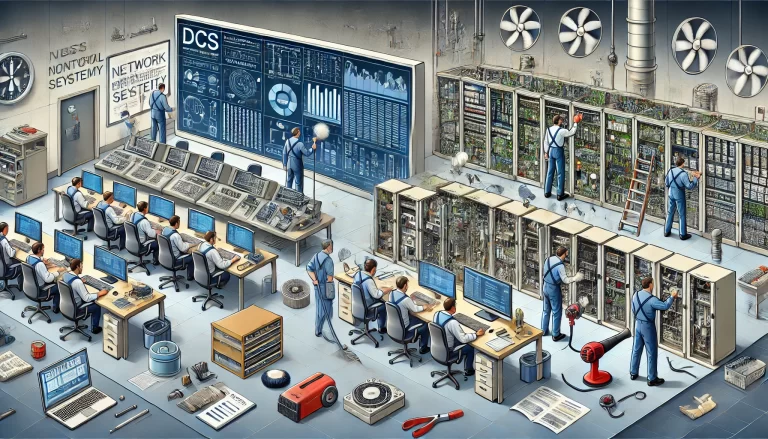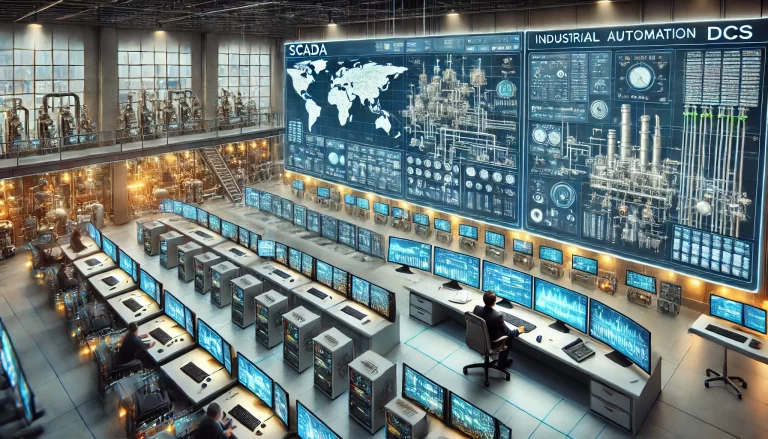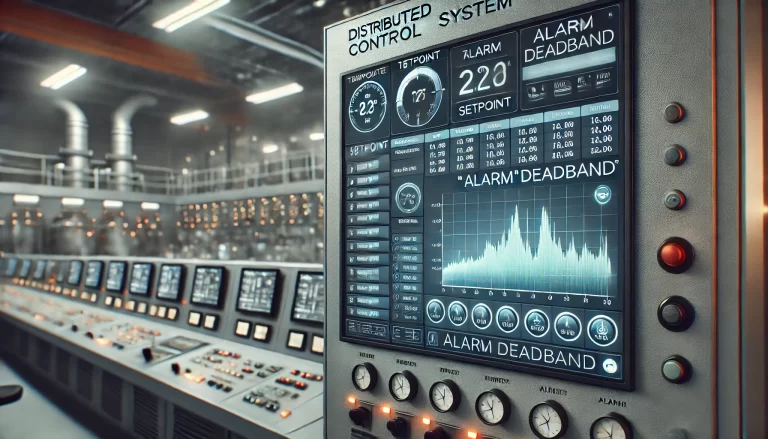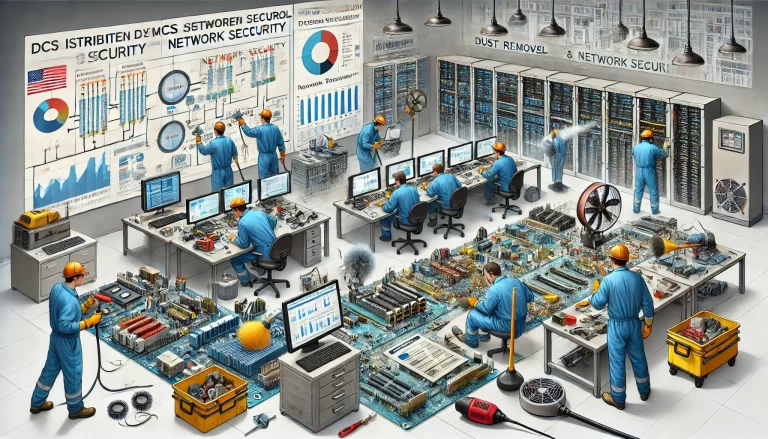Upgrading a Distributed Control System (DCS) is a significant undertaking for industries that rely on automated control systems. The decision involves weighing multiple technical, operational, and financial factors. This article explores when it is necessary to upgrade a DCS and provides detailed strategies to ensure a smooth transition to a new or improved system.

I. When Should You Upgrade a DCS?
Determining the right time to upgrade a DCS requires careful monitoring of both the system’s performance and external factors affecting its operation. Below are the key triggers for initiating a DCS upgrade:
System Aging and Obsolescence
- DCS hardware deteriorates over time, leading to increased maintenance and unexpected downtimes.
- Vendors may discontinue hardware or software support, leaving the system vulnerable without updates or spare parts.
Increased Safety Risks
- Outdated DCS systems often lack modern cybersecurity measures, making them susceptible to hacking or data breaches.
- Safety standards evolve, and old systems may not comply with the latest industry regulations and safety protocols.
Changes in Production or Process Requirements
- Expanding production facilities or adding new processes may require more control points and higher system capacity.
- As industries adopt smart manufacturing or IoT-enabled solutions, legacy DCS systems may struggle with integration.
Compatibility Issues with New Systems
- Older DCS systems may not be compatible with new devices, sensors, or software platforms such as MES (Manufacturing Execution Systems).
- Inconsistent interfaces or data flow can create operational bottlenecks or inefficiencies.
High Maintenance Costs and Downtime
- Frequent repairs, difficult-to-find spare parts, and increased downtime can raise operational costs.
- A modern DCS can reduce the need for frequent maintenance and increase system availability.

II. DCS Upgrade Strategies
Upgrading a DCS can follow different approaches depending on the existing system’s condition, the desired outcome, and resource availability. Below are four key strategies:
1. Full System Upgrade (Complete Migration)
Best for: Systems that are too old to maintain or require a total transformation to meet production needs.
Pros:
- Provides the latest technology and software capabilities.
- Improves system stability, security, and scalability.
- Ensures full compatibility with future technologies.
Cons:
- High cost and time-consuming.
- Requires significant downtime for installation and testing.
- Involves complex migration of data and control logic.
Implementation Tip: Schedule the migration during production off-peak periods to minimize disruption.
2. Phased Upgrade (Step-by-Step Migration)
Best for: Systems with modular components that can be upgraded gradually.
Pros:
- Minimizes downtime and reduces immediate financial burden.
- Allows operators to adapt to the new system over time.
- Distributes risk across different phases of the upgrade.
Cons:
- Involves managing old and new components simultaneously, which can be complex.
- Requires careful planning to ensure interoperability at every stage.
Implementation Tip: Start with the most critical or obsolete modules and gradually upgrade secondary systems.
3. Software-First Upgrade
Best for: Systems with functional hardware but outdated software.
Pros:
- Lower cost since the hardware remains unchanged.
- Can quickly implement new features and improve efficiency.
- Minimal disruption to production processes.
Cons:
- May encounter compatibility issues between new software and old hardware.
- Limited improvement in system performance if hardware is also nearing end of life.
Implementation Tip: Verify software compatibility with existing hardware and test thoroughly in a sandbox environment.
4. Hardware-First Upgrade
Best for: Systems where the hardware is outdated, but the software is still functional.
Pros:
- Extends system life with minimal software changes.
- Enhances reliability with modern hardware components.
- Reduces the chance of equipment failure and downtime.
Cons:
- New hardware might not fully support older software versions.
- Some performance improvements might still be limited by software constraints.
Implementation Tip: Ensure that the hardware supplier provides tools or adapters to bridge compatibility gaps with legacy software.

III. Steps for a Successful DCS Upgrade
Upgrading a DCS system requires a well-coordinated plan to ensure smooth execution. Below is a step-by-step process for implementing a successful upgrade:
1. Conduct a Needs Assessment and Define Objectives
- Identify the reasons for the upgrade (e.g., capacity, security, compliance).
- Engage stakeholders, including operations, IT, and management, to align the upgrade goals.
2. Evaluate the Existing System
- Assess the current system’s performance, reliability, and compatibility with new technologies.
- Determine which components can be retained and which need replacement.
3. Select the Right System and Vendor
- Research vendors and compare solutions based on the required features, support, and cost.
- Ensure the vendor offers long-term support and aligns with your industry standards.
4. Develop a Project Plan
- Create a detailed upgrade timeline with specific milestones.
- Plan the budget, resources, and personnel required for each phase.
- Coordinate with production schedules to minimize downtime during critical stages.
5. Test the New System
- Use a test environment to simulate production scenarios and verify system performance.
- Identify potential risks and address them before the live transition.
6. Train Personnel
- Provide comprehensive training for operators, technicians, and maintenance staff on the new system.
- Offer ongoing support and refresher courses as needed.
7. Execute the Upgrade and Monitor Performance
- Perform the upgrade in stages or during scheduled downtime to minimize impact.
- Monitor the system closely during the initial operation and resolve any issues promptly.

IV. Key Considerations for DCS Upgrades
Data Integrity and Migration
- Ensure that historical data, configurations, and control logic are accurately transferred to the new system.
- Backup critical data before starting the upgrade.
Cybersecurity
- Upgrade to a system that complies with the latest cybersecurity standards.
- Implement firewalls, intrusion detection systems, and regular security audits.
Business Continuity
- Align the DCS upgrade with the company’s IT strategy and overall business goals.
- Ensure compatibility with other systems such as MES, ERP, or cloud platforms.
Cost vs. Benefit Analysis
- Conduct a detailed cost-benefit analysis to evaluate the return on investment (ROI).
- Consider both immediate costs and long-term savings from increased efficiency and reduced downtime.

V. Conclusion
Upgrading a DCS system is an essential step to ensure the stability, security, and efficiency of industrial processes. Whether through a complete overhaul or a phased migration, the key to success lies in careful planning, thorough testing, and seamless execution. A well-executed upgrade not only ensures compliance with modern standards but also lays the foundation for future growth and innovation. By adopting a strategic approach and involving all relevant stakeholders, companies can maximize the benefits of their DCS upgrade and secure their operations for years to come.
